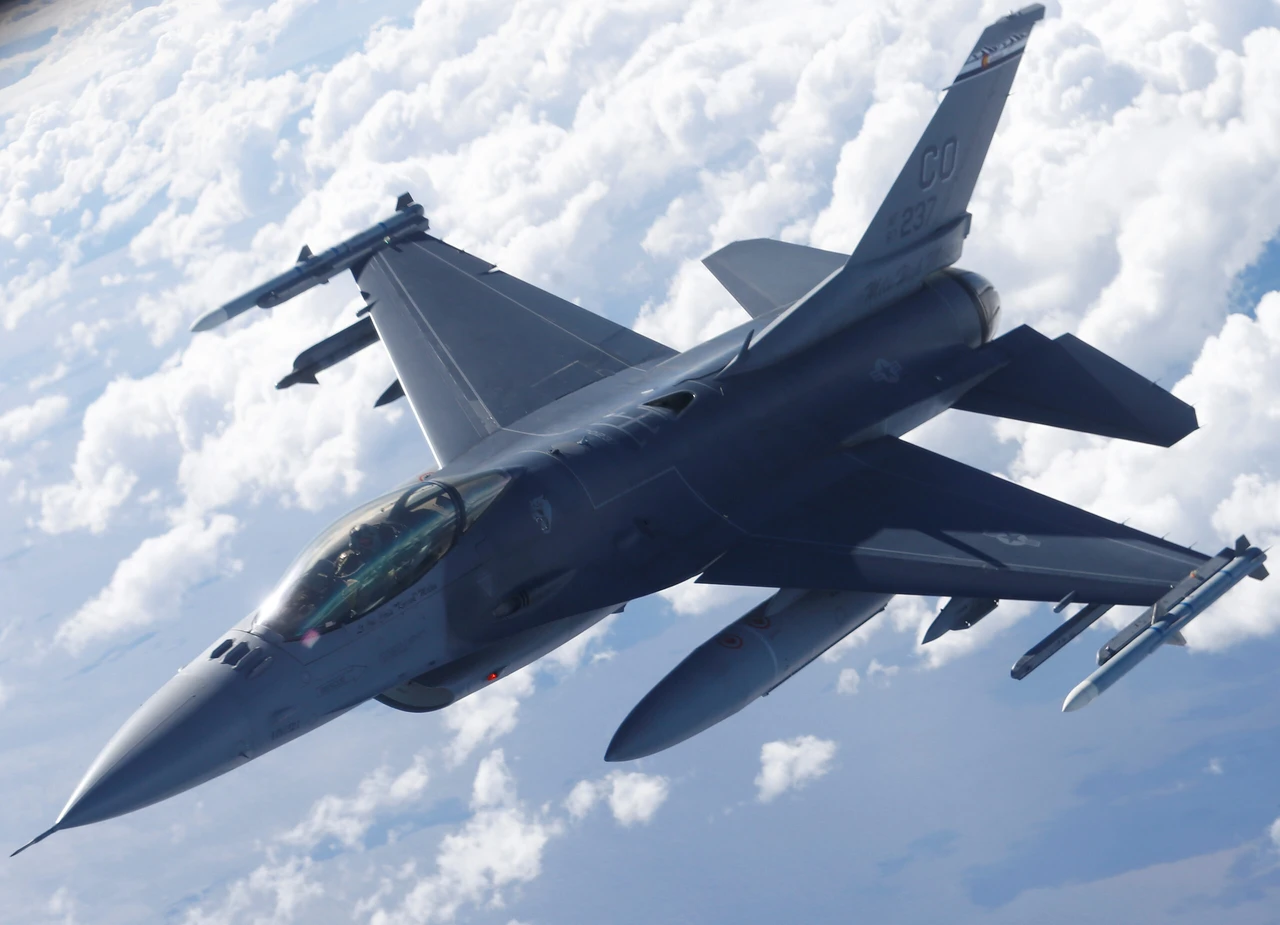NATO allies begin transfer of F-16 jets to Ukraine amid U.S. political uncertainty
 U.S. Air Force F-16 fighter taking part in the U.S.-led Saber Strike exercise flies over Estonia June 6, 2018. (Reuters Photo)
U.S. Air Force F-16 fighter taking part in the U.S.-led Saber Strike exercise flies over Estonia June 6, 2018. (Reuters Photo)
NATO allies announced on Wednesday the commencement of the long-promised transfer of F-16 jets to Ukraine during a summit in Washington, overshadowed by political uncertainties in the United States.
President Joe Biden, aiming to rally the West and reassure US voters amid pre-election scrutiny of his capability at 81, individually welcomed the 31 leaders of the alliance. He urged them to keep pace with Russia’s sharply increased military production since President Vladimir Putin’s invasion of Ukraine two years ago.
“We can — and will — defend every inch of NATO territory and we’ll do it together,” Biden told the North Atlantic Council, the alliance’s formal decision-making body, convened in an air-conditioned convention center while Washington sweltered in a heat wave.
Biden announced that Denmark and the Netherlands had begun sending US-made F-16 jets to Ukraine, fulfilling a key promise made last year to Kyiv, which has struggled to gain air parity with Russia. Additionally, he announced new air defense systems for Ukraine and that the US had agreed to periodically place long-range missiles in Germany.
Secretary of State Antony Blinken emphasized the strategic impact of the F-16 transfer, stating it “concentrates Vladimir Putin’s mind on the fact that he will not outlast Ukraine, he will not outlast us and, if he persists, the damage that will continue to be done to Russia and its interests will only deepen.” He added, “The quickest way to get to peace is through a strong Ukraine.”
Contrastingly, former President Donald Trump, who is leading Biden in recent polls, has suggested a quick peace settlement by forcing Ukraine to surrender territory to Russia. Trump has repeatedly questioned NATO’s utility, viewing it as an unfair burden on the United States.
On the eve of the summit, Russia launched a barrage of missiles on Ukraine, killing dozens, including in Kyiv where a children’s hospital was reduced to debris. Ukrainian President Volodymyr Zelensky, invited to the summit, expressed gratitude for the F-16s, stating that the new aircraft would “bring just and lasting peace closer, demonstrating that terror must fail.”
The summit will also address ways to “Trump-proof” the alliance, including having NATO take over coordination of arms delivery from the United States. Outgoing NATO chief Jens Stoltenberg secured a pledge to continue supplying arms at the current rate of approximately 40 billion euros ($43 billion) annually.
“I expect that regardless of the outcome of the US elections, the US will remain a strong and staunch NATO ally,” Stoltenberg said as leaders gathered for the summit.
Biden has also invited four key Pacific partners — Japan, South Korea, Australia, and New Zealand — in an effort to increase NATO’s role in managing a rising China.
Ukraine’s path to NATO
Ukraine seeks firm assurances of future NATO membership, which considers an attack on any member an attack on all. Negotiations have reportedly settled on a statement supporting Ukraine’s “irreversible path to full Euro-Atlantic integration, including NATO membership.”
While Ukraine’s membership has broad backing from Baltic and Eastern European nations, Biden and German Chancellor Olaf Scholz have expressed concerns about the alliance effectively entering war with nuclear-armed Russia, which currently occupies parts of Ukraine.
President Alexander Stubb of Finland, which joined NATO along with Sweden following Russia’s invasion of Ukraine, praised the summit’s message to Putin. UK Prime Minister Keir Starmer, fresh from a Labour Party electoral victory, promised continued British support for Ukraine, emphasizing NATO’s unity and strength in the face of Russian aggression.
The summit, Starmer told reporters, will demonstrate to Putin that NATO is “bigger now than it’s ever been, more united than it’s ever been, and absolutely clear-eyed about the threat of Russian aggression.”



